Et si les réacs voulaient juste une société jolie ?
A lire leurs articles opposant cathédrales et HLM et qui montrent des jeunes filles en dentelles dansant dans des prés fleuris, on croirait qu’ils souhaitent vivre dans une carte postale. Ils prophétisent la fin de la civilisation quand ils voient l’e-cigarette, les selfie sticks ou le parler des jeunes. La révulsion qu’ils affectent ne semble pas vraiment argumentée, elle semble sensible, immédiate, esthétique. Ainsi Michel Onfray :
Notre occident est en décomposition : les adultes s’achètent des albums à colorier, ils se déplacent en trottinette, ils tétouillent des cigarettes électroniques, la femme à barbe constitue l’horizon indépassable du progrès post-moderne, ils conduisent leurs animaux domestiques chez le psychanalyste, ils marchandisent l’utérus de femmes pauvres pour porter les foetus de riches, ils se ruent sur les soldes comme des bêtes assoiffées sur un point d’eau, mais aucun d’entre eux n’est prêt à mourir pour ces fariboles.
Le coloriage, les trottinettes, les cigarettes électroniques, l’identité genrée ambiguë, la psychanalyse des animaux, la procréation pour autrui mériteraient, vous en conviendrez des argumentations distinctes, chaque sujet différant énormément en portée et en substance, d’autant plus quand on entend prouver qu’ils sont causes de la déliquescence de notre civilisation. Mais Onfray ne tente pas de le prouver, il étale ces innovations qu’il voit comme autant d’égards à un ordre évident : les adultes ne sont pas censés colorier, les adultes ne sont pas censés user de trottinette (mais marcher l’air grave en costard), la cigarette électronique n’est pas naturelle, fume et chope un cancer comme tout le monde, etc. Il vous peint un tableau plus qu’il ne vous convainc d’une nuisance et semble dire : « C’est laid, non ? Ne préfériez vous pas les jours d’antan où aucun adulte sain d’esprit n’osait même colorier ? »
Certes il n’a pas encore complètement assumé son statut réactionnaire. Mais si l’on regarde The Reactivity Place, le blog de Nick B. Steve, un néoréactionnaire catholique, on trouvera une compilation d’articles réactionnaires hebdomadaires, cette fois ci ceux de la aesthetics week chez Social Matter (autre blog conservateur). Qu’est-ce que la beauté, quels sont ses fondements et sa légitimité, s’interrogent-ils ?
- Henry Dampier makes his contribution to the theme on Tuesday: Cities Need Aesthetic Harmony.
- John Glanton has some words to say about Banksy and The Generational Decay of Modern Art.
- Haven Monahan returns this week to contend:Beauty Is Not In The Eye Of The Beholder. Monahan carves out an appreciation for beauty that lies between mere animal responses and dualistic notions that have plagued Westerners for many centuries.
- Vasyl Fedorychko, arrives Friday with a great piece On Beauty and Subversion. He documents various ideology-fueled attacks on traditional conceptions of beauty […] « Because we are taught, almost from birth, that everything is the same, and that everyone is equal: to be discriminating is to deny the inherent equality in all things and all people. We are taught to ignore that the pursuit of the beautiful and the avoidance of the ugly is an evolutionary survival mechanism that enables the preservation of the species. We are forced to internalize a lie. »
-
Sarah Perry makes a significant contribution of her own with How Beauty Fits over at FPR.
Just as there is a tendency to deny the existence of beauty, there is also a tendency to lock it up in art museums, to segregate it from everyday life. If beauty is understood as exclusively a property of old paintings and sculptures and perhaps Shakespeare plays, it cannot intrude into our mundane lives, in the form of doorknobs and socks and the motions of unloading groceries. Indeed, segregating beauty from everyday life seems to excuse the fact that most objects and contexts in our lives are quite ugly and poorly-fitting. Commuting is not beautiful; billboards and offices are ugly; the doorknobs we are obliged to use fit our hands poorly.
Je perdrais du temps à tenter d’établir le pedigree de chacun de ces auteurs, qui me semblent tous relativement importants dans le minuscule champ NRx et qui contribuent à la semaine lancée par Social Matter qui dit justement :
Aesthetics is often neglected among the far-right for several reasons.
Or, au contraire, il me semble que les réactionnaires de tous bords ont toujours un lien particulier à l’esthétique, et parfois il semble vraiment que le discernement du beau et du laid oriente leur division du bien et du mal. Parfois, leur projet de société dans son intégralité semble esthétique. Peut-être qu’il s’agit d’une lecture superficielle : forcément, si on ne regarde que l’apparence de leur discours, ils aimaient les costumes traditionnels et les cathédrales, cela semble donc superficiel, tandis que c’est notre approche qui l’est. Peut-être qu’il s’agit d’un renversement de la causalité : ce n’est pas tant qu’ils veulent fonder une société x ou y parce qu’elle est belle, mais bien plutôt qu’ils trouvent leur société idéale belle, de la même manière qu’un socialiste révolutionnaire pourrait s’esbaudir devant une société sans classes. Enfin, il s’agit peut-être d’attribuer aux réactionnaires des pulsions qui existent chez tous : bien sûr qu’ils enrobent leur projet politique de jolies peintures, bien sûr qu’ils aiment les belles choses.
Michel Onfray, justement réfutait en 1996 dans Politique du Rebelle [ici sur Google Books] les théories du « National-Esthétisme » de Lacoue-Labarthe qui prétendaient que le nazisme était fondamentalement un esthétisme. Trois pags extraites :
Je pense que sa réfutation tient debout : l’hygiénisme y était beaucoup plus important.
Néanmoins, si cette théorie explique mal le nazisme, ou en tout cas la spécificité du nazisme, je pense qu’il y a un fondement au rapprochement que j’essaie d’effectuer entre velléités réactionnaires et esthétisme. Social Matter a peut-être raison en ce qu’il y a moins d’esthétique consciente et conçue comme une discipline séparée, mais c’est je pense parce que les pulsions esthétiques sont au cœur des pulsions réactionnaires.
J’ai téléchargé une multitude d’images postées par Wrath of Gnon (@WrathOfGnon) sur twitter, Gnon étant un concept formé de l’acronyme Nature Or Nature’s God dont on a inversé l’ordre des lettres. De ce que j’ai compris en lisant des néoréacs, il s’agit de sauter la question de Dieu : il existe des lois naturelles, qu’elles viennent de Dieu ou de la force des choses.
La pensée réactionnaires a plusieurs axes, le principal semble être l’invocation de lois naturelles dont, si on s’en écarte, on met en danger la civilisation. La Nature est telle que les institutions qui ont duré des millénaires devraient continuer à durer, parce que ce sont les seules solutions qui marchent. Le patriarcat est là pour une raison. Les villages traditionnels avaient une certaine échelle qui garantissait une vie harmonieuse. Cet équilibre a été mis en péril par les progrès technologiques : modes de production traditionnels dissous, surpopulation, urbanisme à grand échelle qui ne prend plus en compte l’humain, etc.
Comme le dit John Stuart Mill
By some minds, government is conceived as strictly a practical art, giving rise to no questions but those of means and an end. Forms of government are assimilated to any other expedients for the attainment of human objects. They are regarded as wholly an affair of invention and contrivance. Being made by man, it is assumed that man has the choice either to make them or not, and how or on what pattern they shall be made. Government, according to this conception, is a problem, to be worked like any other question of business. The first step is to define the purposes which governments are required to promote. The next, is to inquire what form of government is best fitted to fulfill those purposes. Having satisfied ourselves on these two points, and ascertained the form of government which combines the greatest amount of good with the least of evil, what further remains is to obtain the concurrence of our countrymen, or those for whom the institutions are intended, in the opinion which we have privately arrived at. To find the best form of government; to persuade others that it is the best; and, having done so, to stir them up to insist on having it, is the order of ideas in the minds of those who adopt this view of political philosophy. They look upon a constitution in the same light (difference of scale being allowed for) as they would upon a steam plow, or a threshing machine.To these stand opposed another kind of political reasoners, who are so far from assimilating a form of government to a machine, that they regard it as a sort of spontaneous product, and the science of government as a branch (so to speak) of natural history. According to them, forms of government are not a matter of choice. We must take them, in the main, as we find them. Governments can not be constructed by premeditated design. They « are not made, but grow. » Our business with them, as with the other facts of the universe, is to acquaint ourselves with their natural properties, and adapt ourselves to them. The fundamental political institutions of a people are considered by this school as a sort of organic growth from the nature and life of that people; a product of their habits, instincts, and unconscious wants and desires, scarcely at all of their deliberate purposes. Their will has had no part in the matter but that of meeting the necessities of the moment by the contrivances of the moment, which contrivances, if in sufficient conformity to the national feelings and character, commonly last, and, by successive aggregation, constitute a polity suited to the people who possess it, but which it would be vain to attempt to superinduce upon any people whose nature and circumstances had not spontaneously evolved it.It is difficult to decide which of these doctrines would be the most absurd, if we could suppose either of them held as an exclusive theory. But the principles which men profess, on any controverted subject, are usually a very incomplete exponent of the opinions they really hold. No one believes that every people is capable of working every sort of institution. Carry the analogy of mechanical contrivances as far as we will, a man does not choose even an instrument of timber and iron on the sole ground that it is in itself the best. He considers whether he possesses the other requisites which must be combined with it to render its employment advantageous, and, in particular whether those by whom it will have to be worked possess the knowledge and skill necessary for its management. On the other hand, neither are those who speak of institutions as if they were a kind of living organisms really the political fatalists they give themselves out to be. They do not pretend that mankind have absolutely no range of choice as to the government they will live under, or that a consideration of the consequences which flow from different forms of polity is no element at all in deciding which of them should be preferred. But, though each side greatly exaggerates its own theory, out of opposition to the other, and no one holds without modification to either, the two doctrines correspond to a deep-seated difference between two modes of thought; and though it is evident that neither of these is entirely in the right, yet it being equally evident that neither is wholly in the wrong, we must endeavour to get down to what is at the root of each, and avail ourselves of the amount of truth which exists in either.
Ainsi sont assez parlants les memes de Wrath Of Gnon sur l’urbanisme :
Une architecture naturelle, organique, à la mesure de l’homme, opposée à la folie des buildings.
Sur le plan de la beauté, il confesse à plusieurs reprises son aspect fondamental, qui existe en Occident au moins depuis aussi longtemps que Platon associa le beau, le bien et le vrai :

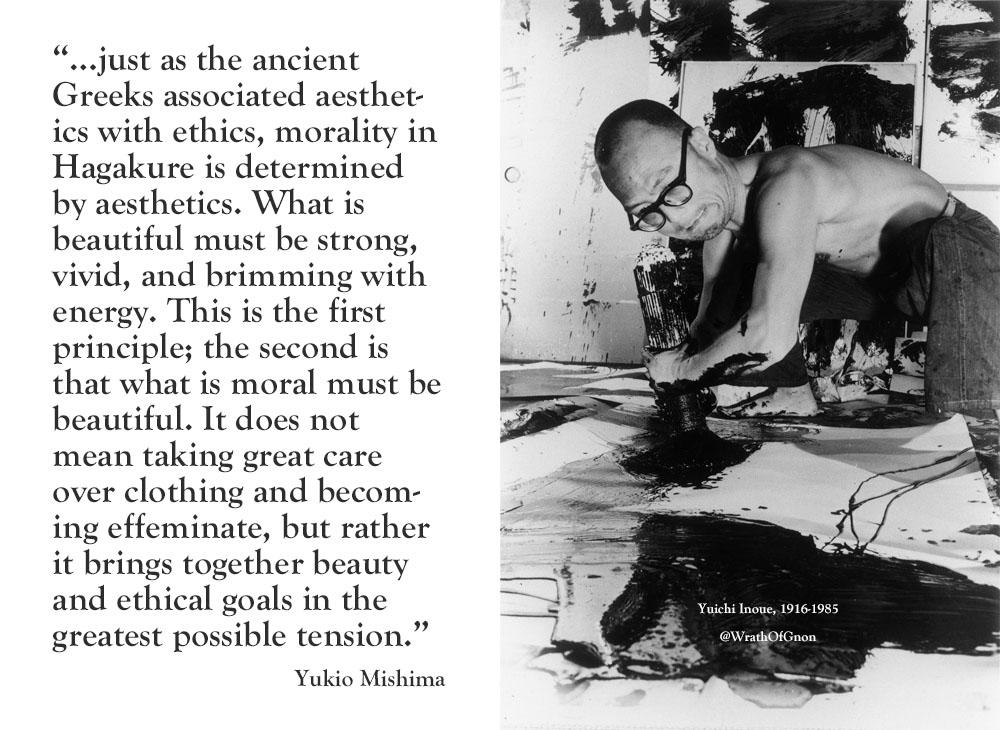


Dans ces quatres exemples on admet le caractère primordial de la beauté dans le projet réactionnaire. Peut-être s’agit-il d’un cas particulier. Mais je ne pense pas. Si on prends Mencius Moldbug, fondateur pour beaucoup des néoréactionnaires NRx et affiliés, il disait en juin 2007 :
There’s an almost medieval flavor to this exercise, and it can lead to an infinite amount of intellectual entertainment. Of course, not even John Rawls can derive “ought” from “is,” and there is no rational reason to prefer his definition of an ideal society to anyone else’s. Ethics are fundamentally aesthetic. But there is a clarity and prettiness to the Rawlsian theory of righteousness that makes it aesthetically quite attractive, and I certainly cannot imagine any solution to the same problem that I’d find more satisfying. (The Rawlsian God : cryptocalvinism in action)
Revenons à Wrath of Gnon. Motto répété : Tradition Beats Any Fashion, où il montre clairement qu’il ne pense pas uniquement aux traditions occidentales. De toute évidence, si la Nature évolue des lois bonnes, elle en évolue des bonnes partout autour du monde, qui conviennent à chaque peuple, chaque région etc.
Citant ici @sarahdoingthing
Avantage des traditions : être un point de Schelling, un truc sur lequel on peut tous être d’accord. La société moderne, disent-ils, est perclue de jeux de signaux qui bouffent trop de nos ressources : comment parler, comment s’habiller, quelle musique écouter. Si on avait une tradition fixe, on perdrait moins de temps là autour et on arrêterait de glorifier les coolkids et d’enfoncer les autres.
J’avais moi-même établi une théorie contigue sur la droite et la gauche au sens extra-clanique :
Au-delà de ça, les trucs classiques : famille, patrie, tradition,etc.
Et une bonne dose de fantasme sur le fait que t’aurais été un chevalier.
Je vous les remets pas tous, j’en ai des milliers. Donc où serait la primauté de l’esthétique?
1. Le monde moderne est laid
Lutter contre la modernité architecturale (Wrath Of Gnon) ou vestimentaire (Sarah Perry) est un raccourci pratique pour lutter contre la modernité sociale (capitalisme). Je crois que ça se sent assez dans les textes évoqués.
2. L’attrait de la hiérarchie immédiate
Les réacs adorent les hiérarchies, c’est d’ailleurs ce qui selon eux fait tourner le monde, ils honnissent l’égalité, la possibilité d’être interchangeable, tout doit rester à sa place. Les pulsions esthétiques créent des hiérarchies immédiates entre le beau et le laid, qui s’opposent au tout-égal.
Fedorychko en fait même un mécanisme évolutif : « We are taught to ignore that the pursuit of the beautiful and the avoidance of the ugly is an evolutionary survival mechanism that enables the preservation of the species. ». La fameuse idée que les femmes qu’on trouve belles seraient automatiquement plus fertiles/meilleurs pour porter des enfants.
Et ça fait sens dans le projet réactionnaire, dans l’envie d’une immédiateté, d’un rapprochement de l’état de nature. Quoi de plus naturel qu’un instinct ? Tes instincts doivent être corrects. On voit le même développement autour des clichés racistes. Ainsi Radish, un blog persuadé d’être le plus gros bad boy du coin, raciste et esclavagiste dit que les stéréotypes raciaux sont justifiés puisque basés sur l’expérience (par exemple ici).
C’est là que vient le deuxième avantage de l’esthétisme : c’est immédiat. Si on doit juger quelqu’un sur la coupe de son pantalon, c’est vite fait, et on perd moins de temps. C’est le même souci d’efficacité. Comme le dit Scott Alexander, les réactionnaires ont une pensée optimisée pour une société difficile :
I propose that the best way for leftists to get themselves in a rightist frame of mind is to imagine there is a zombie apocalypse tomorrow. It is a very big zombie apocalypse and it doesn’t look like it’s going to be one of those ones where a plucky band just has to keep themselves alive until the cavalry ride in and restore order. This is going to be one of yourlong-term zombie apocalypses. What are you going to want?
First and most important, guns. Lots and lots of guns.
Second, you’re going to have a deep and abiding affection for the military and the police. You’re going to hope that the government has given them a lot of funding over the past few years.
Third, you’re going to start praying. Really hard. If someone looks like they’re doing something that might offend God, you’re going to very vehemently ask them to stop. However few or many atheists there may be in foxholes, there are probably fewer when those foxholes are surrounded by zombies. Or, as Karl Marx famously said of zombie uprisings, “Who cares if it’s an opiate? / It’s time to pray!”
Fourth, you’re going to be extremely suspicious of outsiders. It’s not just that they could be infected. There are probably going to be all sorts of desperate people around, looking to steal your supplies, your guns, your ammo. You trust your friends, you trust your neighbors, and if someone who looks different than you and seems a bit shifty comes up to you, you turn them away or just kill them before they kill you.
Fifth, you’re going to want hierarchy and conformity. When the leader says run, everyone runs. If someone is constantly slowing the group down, questioning the group, causing trouble, causing dissent, they’re a troublemaker and they can either shut up or take their chances on their own. There’s a reason all modern militaries work on a hierarchical system that tries to maximize group coherence.
Sixth, you are not going to be sentimental. If someone gets bitten by the zombies, they get shot. Doesn’t matter if it’s really sad, doesn’t matter if it wasn’t their own fault. If someone breaks the rules and steals supplies for themselves, they get punished. If someone refuses to pull their weight, they get left behind. Harsh? Yes. But there’s no room for people who don’t contribute in a sleek urban postapocalyptic zombie-fighting machine.
Seventh, you want to maximize wealth. Whatever gets you the supplies you need, you’re going to do. If that means forcing people to work jobs they don’t like, that’s the sacrifice they’ve got to make. If your raid on a grocery store leaves less behind for everyone else, well, that’s too bad but you need the food. Are woodland animals going to go extinct as more and more survivors retreat to the woods and rely on them for food? That’s not the kind of thing you’re worried about when you’re half-starved and only a few hours ahead of the zombie horde.
Eighth, strong purity/contamination ethics. We know that purity/contamination ethics are an evolutionary defense against sickness: disgusting things like urine, feces, dirt, blood, insects, and rotting corpses are all vectors of infection; creepy animals like spiders, snakes, and centipedes are all vectors for poisoning. Maybe right now you don’t worry too much about this. But in a world where the hospitals are all overrun by zombies and you need to outrun a ravenous horde at a moment’s notice, this becomes a much bigger deal. Not to mention that anything you catch might be the dreaded Zombie Virus.
Ninth, an emphasis on practical skills rather than book learning. That eggheaded Professor of Critical Studies? Can’t use a gun, isn’t studying a subject you can use to invent bigger guns, not a useful ally. Probably would just get in the way. Big masculine men who can build shelters and fight with weapons are useful. So are fertile women who can help breed the next generation of humans. Anyone else is just another mouth to feed.
Tenth, extreme black and white thinking. It’s not useful to wonder whether or not the zombies are only fulfilling a biological drive and suffer terribly when you kill them despite not being morally in the wrong. It’s useful to believe they’re the hellish undead and it’s your sacred duty to fight them by any means necessary.
In other words, “take actions that would be beneficial to survival in case of a zombie apocalypse” seems to get us rightist positions on a lot of issues. We can generalize from zombie apocalypses to any desperate conditions in which you’re not sure that you’re going to make it and need to succeed at any cost. […] Both rightists and leftists will find much to like in this idea. The rightists will ask: “So you mean that rightism is optimized for survival and effectiveness, and leftism is optimized for hedonism and signaling games?” And I will mostly endorse this conclusion.
On the other hand, the leftists will ask: “So you mean rightism is optimized for tiny unstable bands facing a hostile wilderness, and leftism is optimized for secure, technologically advanced societies like the ones we are actually in?” And this conclusion, too, I will mostly endorse. (A Thrive/Survive Theory of the Political Spectrum)
Et forcément, en situation critique, tout ce qui peut aider à trancher vite est un avantage.
Mais quelle hypocrisie quand il partage ensuite ce genre de messages : citant Tolkien.
« Give me a King whose chief interest in life is stamps, railways, or race-horses; and who has the power to sack his Vizier if he does not like the cut of his trousers. » – Tolkien
Un bon roi devrait virer son ministre sur la coupe de ses pantalons. C’est clairement soumettre le gouvernement aux dictats de la mode, mais surtout, à mon avis aveu important, de l’esthétique, tout comme l’attrait pour les timbres, les train, les chevaux de course. On exige des monarques puissants mais futiles.
Aussi, un conflit apparaît quand on regarde quelles images l’illustrent : les traditions sont souvent le fruit de bricolages récents.
La peinture de droite est un tableau d’un service pour le Order of the Bath, créé par George I au XVIIIe siècle. Même s’il reprend le principe plus vieux d’ordres de chevalerie et survit jusqu’à nos jours, on peut difficilement arguer que ses fonctions et formes n’ont pas suivi des modes. Bien sûr, le réactionnaire ne questionne pas l’arbitraire d’une tradition tant que c’est une tradition.
Pour citer Lovecraft :
« All the life we can ever imagine is the artificial and arbitrary network of illusions with which we may happen to surround ourselves. We know that all are the mere result of accident and perspective, but we gain nothing by tearing them down. ’Tis indeed uncommon senseless to tear down with a rusty dung-fork a mirage which never really existed. I think it best becomes a man of sense to chuse whatever sort of agreeable fancies best amuse him, and thenceforward to revel innocently in them; sensible that they are not real, but equally aware that since reality does not exist, he can gain nothing and lose much by brushing them away. » (Selected Letters, Arkham House, 1976, I.262)
« It is because I am a complete sceptic & cynic, recognising no such qualities as good or evil, beauty or ugliness, in the ultimate structure of the universe, that I insist on the artificial & traditional values of each particular cultural stream — proximate values which grew out of the special instincts, associations, environment, & experiences of the race in question, & which are the sole available criteria for the members of that race & culture, though of course having no validity outside it. These backgrounds of tradition against which to scale the objects & events of experience are all that lend such objects & events the illusion of meaning, value, or dramatic interest in an ultimately purposeless cosmos — hence I preach & practice an extreme conservatism in art forms, society, & politics, as the only means of averting the ennui, despair, & confusion of a guideless & standardless struggle with unveiled chaos. » (II.125)
Je suis sûr qu’on trouverait des indices chez Nietzsche (quoique j’ai la flemme de retrouver où il parle d’ajuster sa morale à son esthétique) et peut-être chez Carlyle, si je devais monter un dossier plus convaincant, mais je suis moi-même à moitié convaincu.
Qu’en pensez-vous ?

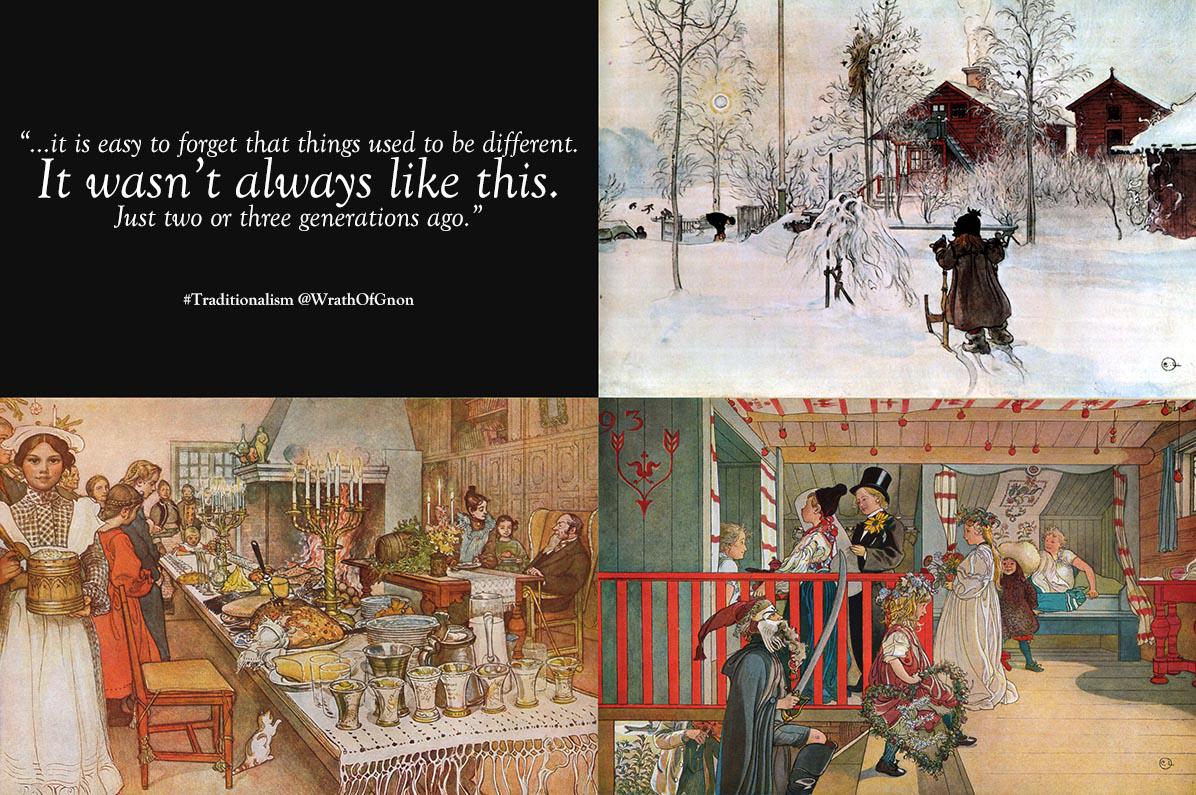

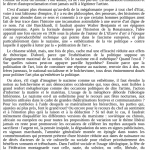
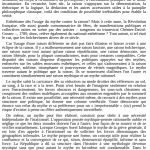

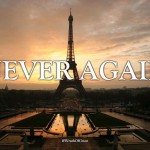
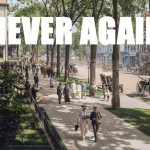
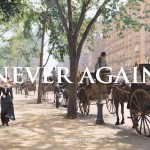




























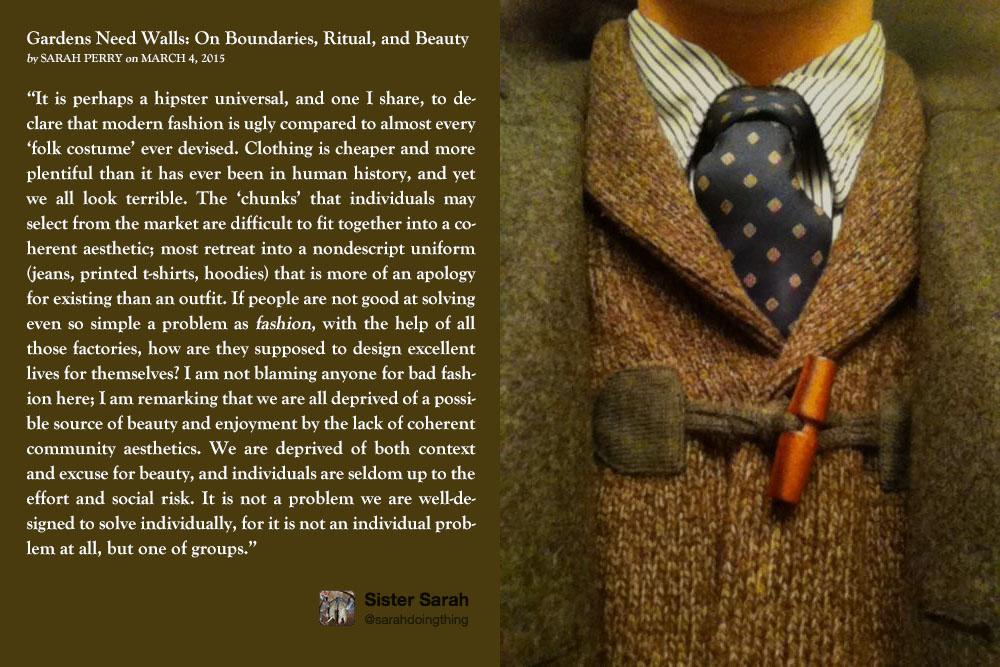


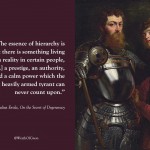



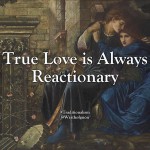









Répondre à La chair est triste Annuler la réponse